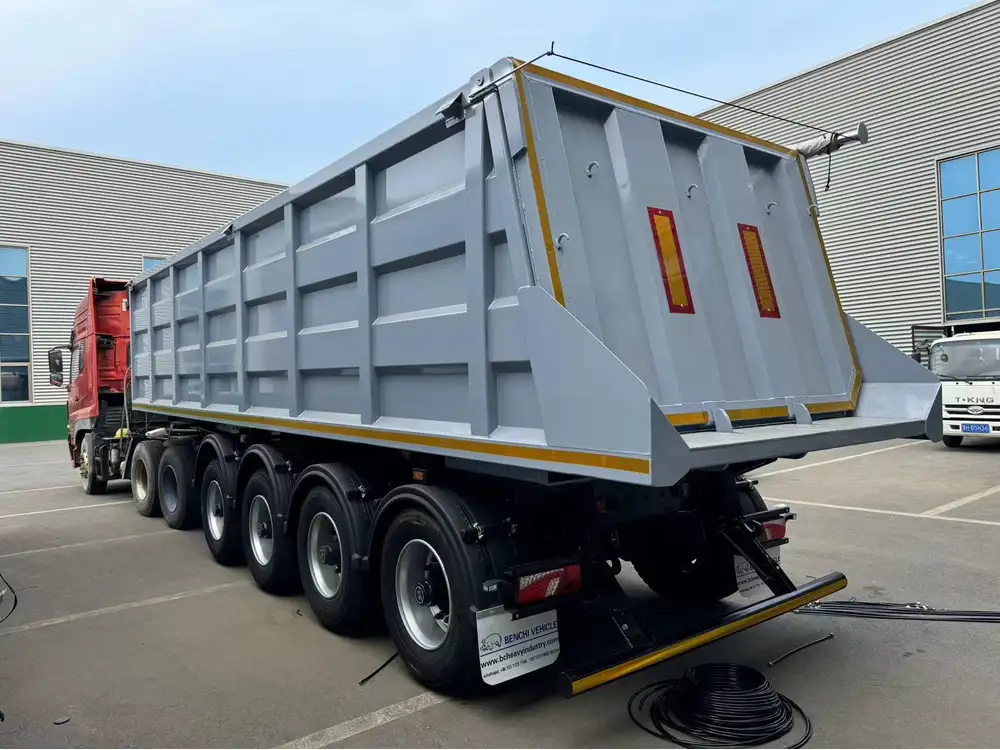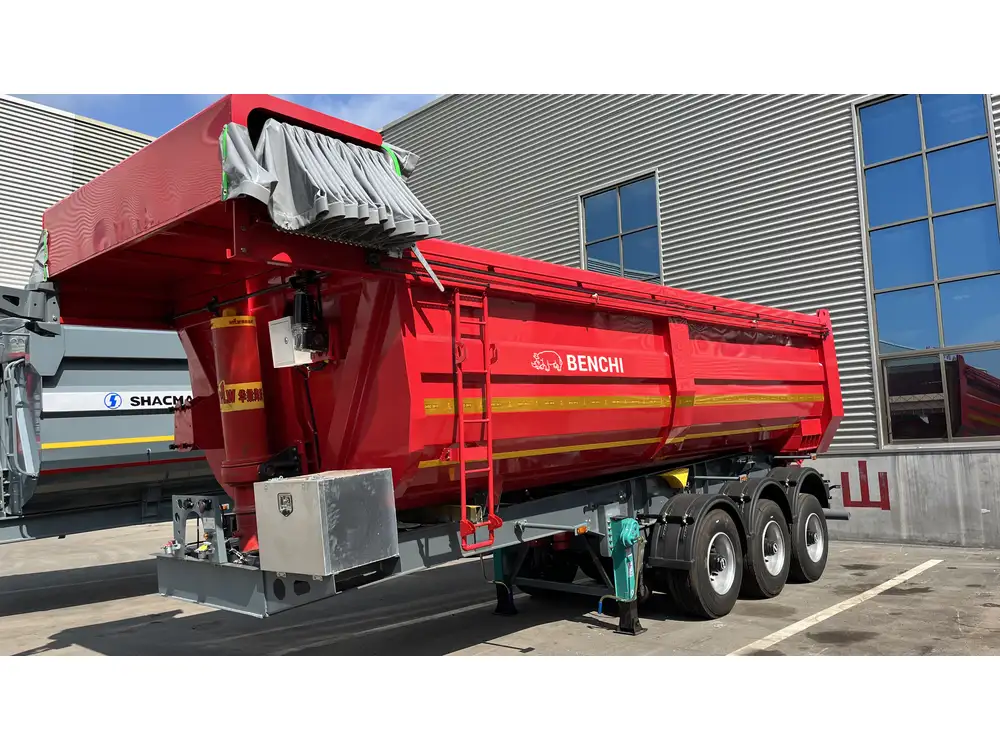When it comes to maintaining semi-trailers, the removal of axles can be an essential procedure. Whether you are replacing worn-out components, retrofitting new technologies, or simply conducting maintenance, understanding the proper technique for axle removal is crucial to ensuring safety and efficiency. This guide provides an in-depth look into the process of axle removal, accompanied by crucial details and tips to facilitate a seamless operation.
Table of Contents
- Understanding Semi-Trailer Axles
- Types of Axles
- Key Components
- Tools and Equipment Needed
- Safety Precautions
- Step-by-Step Process for Removing Semi-Trailer Axles
- Preparation
- Supporting the Trailer
- Removing the Axle
- Inspecting the Axle and Components
- Common Challenges and Solutions
- FAQ Section
- Conclusion
Understanding Semi-Trailer Axles

Types of Axles
Semi-trailers commonly utilize two primary types of axles: straight axles and drop axles. Each type is designed for specific weight distributions, load capacities, and road conditions. Understanding the differences can assist in selecting appropriate replacements or upgrades when necessary.
| Type | Description | Load Capacity |
|---|---|---|
| Straight | Consistent height and typically easier to maintain | 20,000 – 25,000 lbs per axle |
| Drop | Lower center of gravity to enhance stability | Up to 50,000 lbs total for twin axles |
Key Components
The axle assembly includes various components that work in unison. Familiarity with these parts makes the removal process more intuitive.
- Axle Beam: The main body providing structural integrity.
- Hub: Encases the wheel bearings and allows smooth wheel rotation.
- Brake Components: Essential for vehicle safety, including shoes, drums, and air lines.
- Spring Assemblies: Provide support and shock absorption.
Tools and Equipment Needed
Before starting the axle removal, gather the following tools and equipment:
- Wrenches and Sockets: For loosening and tightening bolts.
- Pneumatic Tools: To expedite the removal process.
- Jack Stands: To support the semi-trailer securely.
- Floor Jack: For lifting the trailer.
- Hammer/Dead Blow Hammer: For persuasion without damaging components.
- Bolt Extractor Set: Useful for removing rusted or seized bolts.
- Safety Gear: Gloves, goggles, and steel-toed boots.

Safety Precautions
Safety should always be paramount. The following precautions are essential when removing semi-trailer axles:
- Work on a Level Surface: Ensure the semi-trailer is parked on a stable, flat surface to prevent rolling or slipping.
- Use Wheel Chocks: Place chocks behind the wheels to avoid unintended movement.
- Wear Protective Gear: Always don appropriate safety equipment to prevent injuries.
- Do Not Rush: Take the necessary time to perform each step carefully to avoid accidents.
Step-by-Step Process for Removing Semi-Trailer Axles
Preparation
- Empty the Trailer: Remove all cargo from the trailer to reduce weight.
- Inspect the Axle Area: Look for any visible damage or rust that might complicate the removal.
- Gather Tools: Ensure that all necessary tools are within reach to avoid the risk of injury.

Supporting the Trailer
- Lift the Trailer: Use a floor jack to lift the semi-trailer to a sufficient height.
- Place Jack Stands: Once lifted, use jack stands to support the trailer securely. Make sure it is stable before proceeding.
Removing the Axle
- Disconnect Brake Lines: Carefully detach brake lines, noting their organization to facilitate reinstallation.
- Remove Brake Components:
- Carefully remove brake shoes and drums, holding them in a clean area to avoid damage.
- Unfasten U-Bolts: Locate the U-bolts securing the axle to the chassis. Use an impact wrench to remove these fasteners effectively.
- Detach the Axle: Once all fastening hardware is removed, gently tap the axle beam with a hammer to dislodge it from its mounting points.
- Lower the Axle: Carefully lower the axle assembly, ensuring all components, including support brackets, are detached fully.
Inspecting the Axle and Components
Examine the removed axle thoroughly for signs of wear, damage, or corrosion. Inspect the following:
- Bushings and Bearings: Check for smooth rotation; replace if any binding is detected.
- Brake Mechanisms: Assess for wear and ensure that brake pads have ample material left.
- Spring Assemblies: Look for cracks, sagging, or any signs indicating failure.

Common Challenges and Solutions
During the axle removal process, various challenges may arise. Here are some common issues and their solutions:
Seized Bolts
- Solution: Apply a penetrating oil and let it sit for several minutes. Use a bolt extractor if the bolt remains stuck.
Misalignment
- Solution: If the axle appears difficult to remove due to misalignment, check and adjust the supportive jacks to align the axle more accurately.

Brake Line Damage
- Solution: If brake lines are damaged during removal, promptly replace them to maintain system integrity.
Difficulty with U-Bolts
- Solution: If using manual tools proves inefficient, switch to a pneumatic wrench to deliver the necessary torque without strain.
FAQ Section
Q1: How often should I remove and inspect my semi-trailer axles?
- Routine inspections should occur every 10,000-15,000 miles or whenever performing comprehensive maintenance checks.
Q2: Do I need specialized equipment to remove semi-trailer axles?
- While not strictly necessary, using pneumatic tools can save time and reduce physical strain.
Q3: What should I do if I find significant wear in axle components?
- It is advisable to replace damaged parts to maintain optimal safety and performance.
Q4: Can I perform this work without professional assistance?
- Yes, however, sufficient knowledge and experience are crucial to avoid potential safety hazards.
Q5: When should I consult a professional?
- If significant damage is identified or if you feel unsure about the removal process, it is best to enlist professional help.

Conclusion
The removal of semi-trailer axles, while straightforward, requires attention to detail and adherence to safety protocols. By understanding the types of axles, preparing adequately, and following a step-by-step guide, you can ensure a smooth removal process. Regular maintenance not only enhances vehicle performance but also extends the lifespan of your trailers, making it a worthwhile investment. Should you encounter challenges, remember that troubleshooting common problems can save time and effort. Always prioritize safety as the first step toward effective maintenance.



